Way back in the day before the Europeans came to Cape Cod, the entire peninsula was covered with hard wood forests. Sassafras, hickory, beech, oak, maple and more were everywhere. So were the tall and stately white pines. The dirt was dark and loamy, rich with nutrients.
And then, the wood hungry people chopped down all the trees. All the trees. By the time Thoreau walked our shores in the mid 1800s there wasn’t a tree in the landscape, noted in his book, Cape Cod.
With the trees went the soil, leaving sand and in some areas, clay, behind.
Today our woodlands are full of oak and pitch pine. Pitch pine was planted in the 1800s to try and stop the eroding of the soil. Pitch pine is fast growing and tough. If you’ve been to Cape Cod you have seen pitch pine. It is now ubiquitous here.
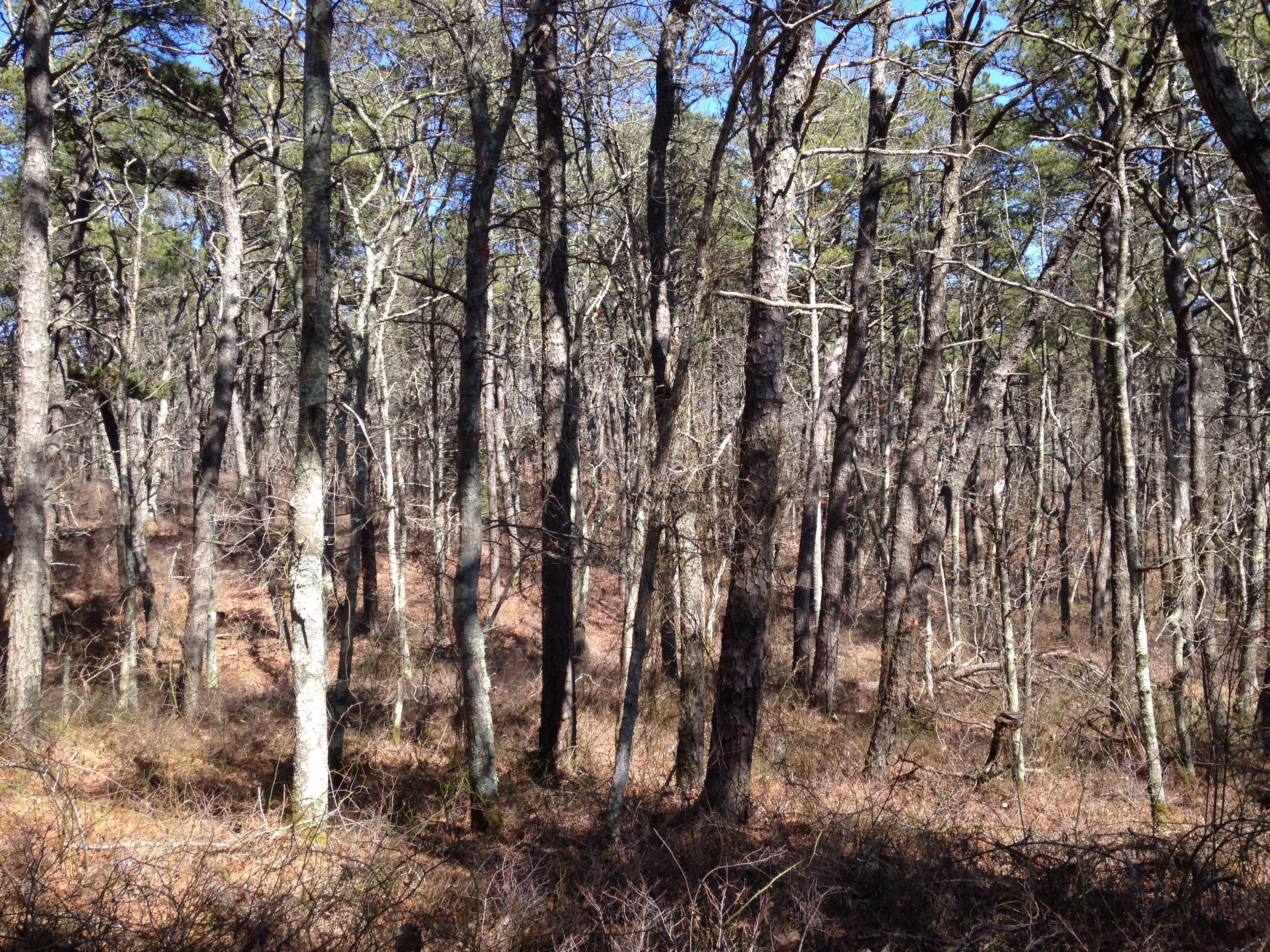
Almost all our woodlands are pretty monotonous. Pitch pine and oak….and in many areas the taller, wilier oak is winning. Pitch pines top out at about 50 feet. Oaks grow much taller.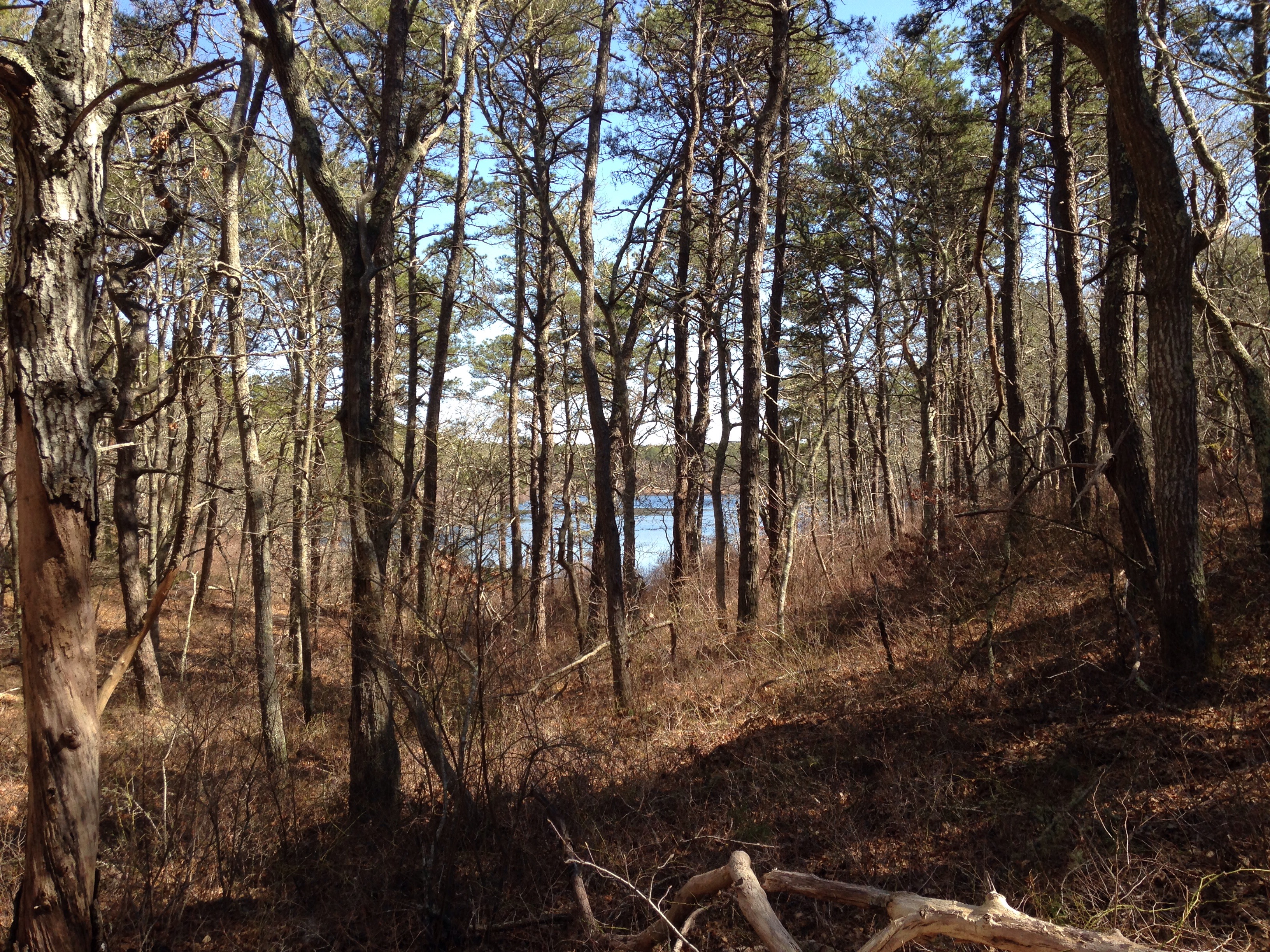 Every year the pines drop cones full of seeds and from those sprout little trees like this one. Some will prosper and grow. Many will not.
Every year the pines drop cones full of seeds and from those sprout little trees like this one. Some will prosper and grow. Many will not.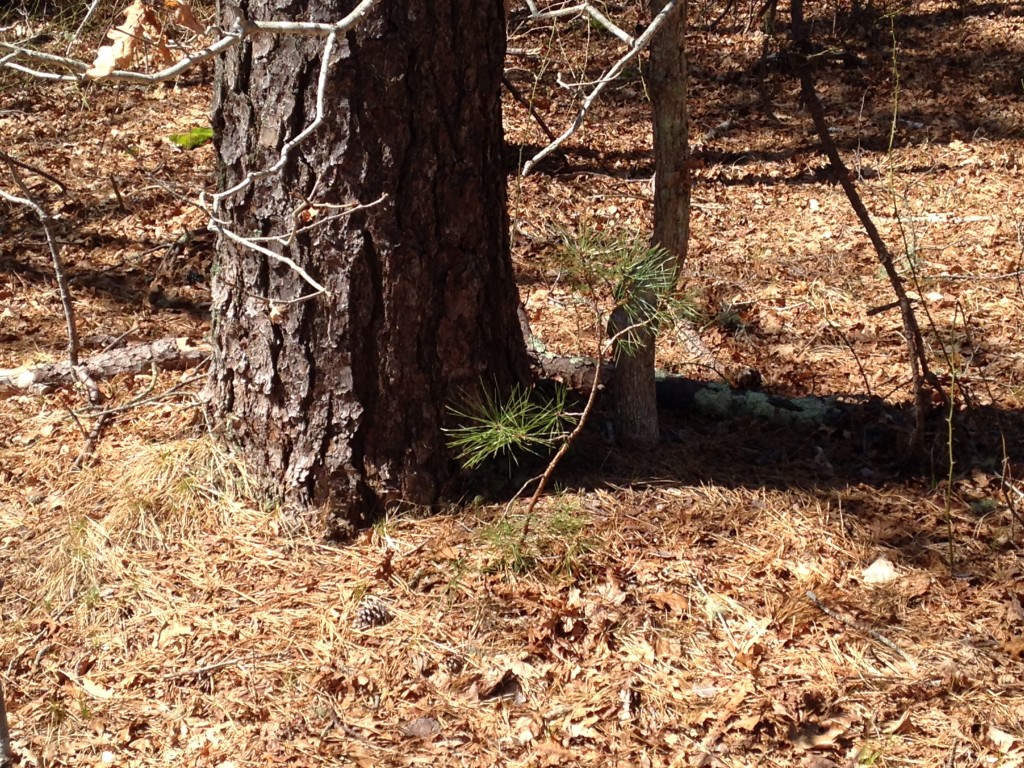 Much of what is now woodland on the Cape was once used as farmland. Many trees were cut again to clear land and it is not unusual to find trees with two trunk in these areas. Both trunks grew from sprouts from the stump, left to rot.
Much of what is now woodland on the Cape was once used as farmland. Many trees were cut again to clear land and it is not unusual to find trees with two trunk in these areas. Both trunks grew from sprouts from the stump, left to rot.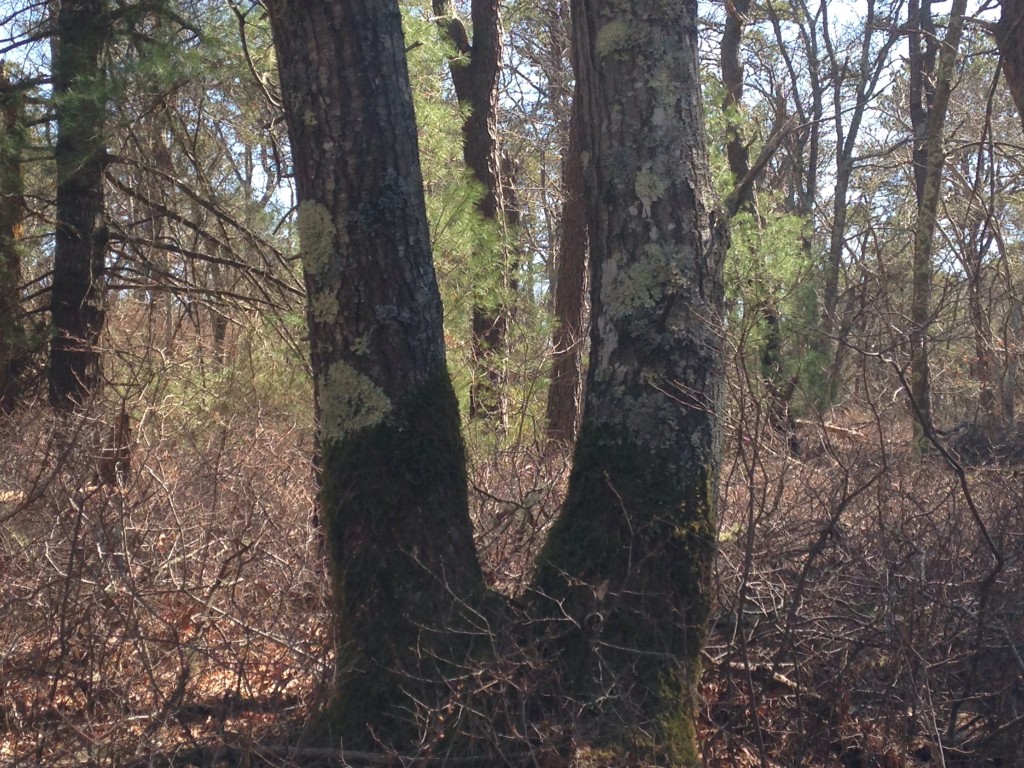 American holly trees can be found in many of our woodlands. Some areas were actually cultivated for holly and are known as holly reservations, showcasing many varieties, such as Ashumet in Hatchville and Ryder Conservation area in Sandwich. Other woodlands have many accidentals, planted by birds which ate the seeds and then pooped them out.
American holly trees can be found in many of our woodlands. Some areas were actually cultivated for holly and are known as holly reservations, showcasing many varieties, such as Ashumet in Hatchville and Ryder Conservation area in Sandwich. Other woodlands have many accidentals, planted by birds which ate the seeds and then pooped them out.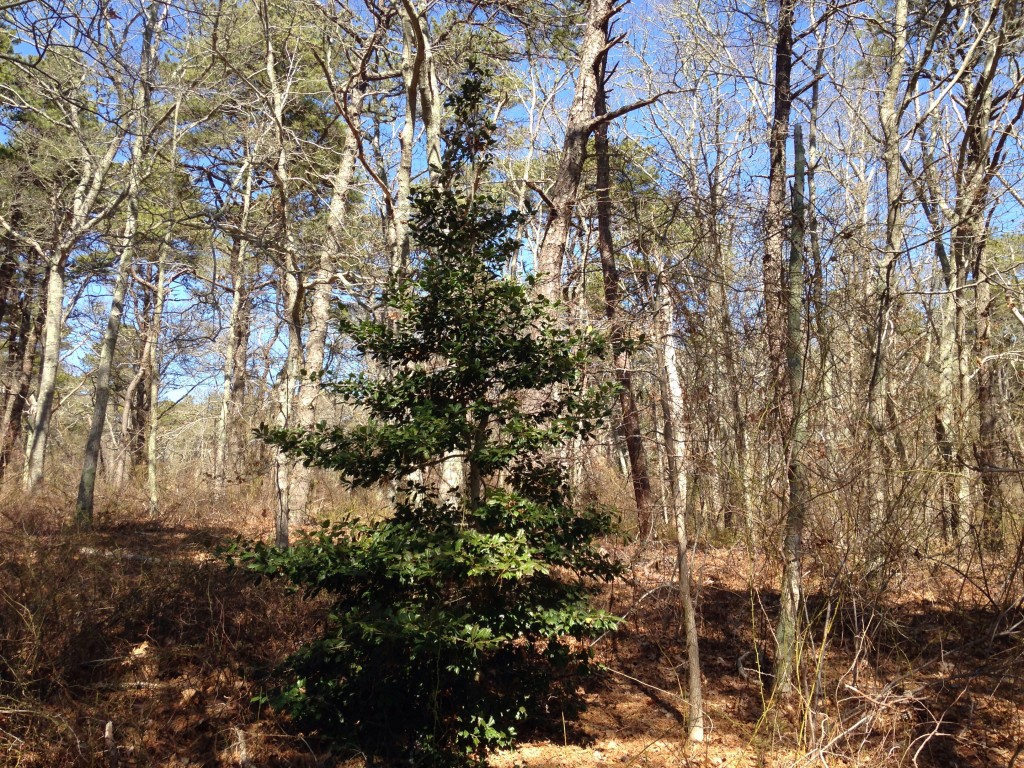 Some areas, especially in Mashpee, still have some very old, very tall white pines. In recent years I’ve been noticing white pines sneaking back into other areas as well, such as this area in Hyannis around Hathaway’s Pond. White pines grow fast and get very tall, out pacing the pitch pines so it will be interesting to see how this develops, if I live that long.
Some areas, especially in Mashpee, still have some very old, very tall white pines. In recent years I’ve been noticing white pines sneaking back into other areas as well, such as this area in Hyannis around Hathaway’s Pond. White pines grow fast and get very tall, out pacing the pitch pines so it will be interesting to see how this develops, if I live that long.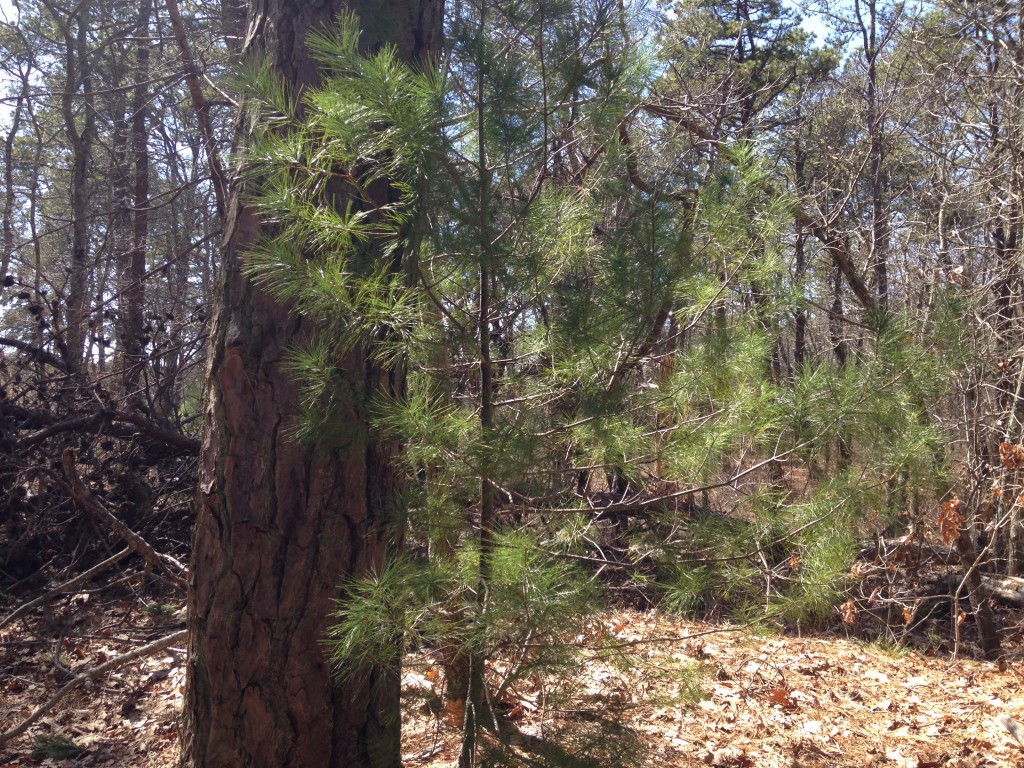 I ‘ll be posting more about local trees and flowers as spring unfolds so stay tuned!
I ‘ll be posting more about local trees and flowers as spring unfolds so stay tuned!


